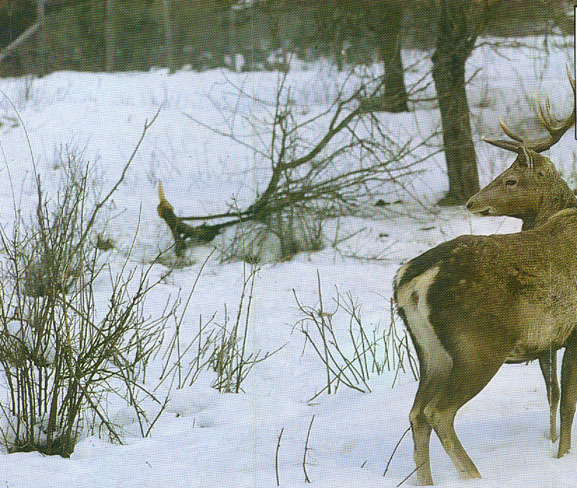Adventure
Sports in Kashmir
Wildlife
Dachigam National Park:
Amidst forests of silver birch and conifer roams
the hangul. Rare and on the verge of extinction
till a few years ago, the national park at
Dachigam contains the last viable hangul
population in the world. Related to the red deer
of Europe, this breed is characterized by its
white rump patch and impressive spread of antlers.

Of an the many
sanctuaries in the state, the one at Dachigam is
the best known. At one time the exclusive hunting
preserve of the Maharaja of Kashmir, it was
declared a national park in 1951, and owing to a
strictly enforced conservation programme, the
hangul population, once 150, now stands at over
400 animals.
Dachigam, spread over an
area of 141 sq km, is the home of 20 mammal
species including the leopard and over 150 species
of avifauna. Open throughout the year, there is no
prime viewing season, as the visitor will find
something of interest all through the year. At
Panzgam, Laribal, Sangargulu and Gratnar are huts
for overnight stay.
The Hemis High
Altitude National Park:
includes the catchments of two valleys which drain
into the River Indus. It is named after the famous
monastery - Hemis, and sprawls over 600 sq km.
approachable by road from Leh. This national park
contains several camping sites. The area is barren
and rocky, covered only sparsely with vegetation.
Most of the ten species of mammal here are
extremely rare - shapu, bharal, great Tibetan
sheep, ibex and snow leopard. The avifauna too
comprises species which are not seen at lower
altitudes: Himalayan snow cock being an example.
The best season for mammal viewing is September to
May and for bird viewing March to May and
September to December. For passes contact the
Wildlife Warden, Leh.
Overa Wildlife
Sanctuary: located 76 km from Srinagar, near
Pahalgam, it has an area of 32 sq km, and is famed
for its many species of pheasants. It sustains 13
species of mammals and over 80 species of birds.
The best time to visit the sanctuary for mammal
viewing is September to April and for bird viewing
from March to August.
Overa-Aru Biosphere
Reserve: located 76 km from Srinagar, near
Pahalgam, it has an area of 32 sq km. Several
species of birds as wed as fauna are found
here - musk deer, brown bear, leopard to
name a few. The altitudinal range varies from
3,000 to 5,425 metros above sea level. Prime
viewing time for the upper areas is from May to
August. In the lower areas, for bird viewing the
best time is March to May and for animal viewing
from September to March.
Gulmarg Biosphere
Reserve: 48 km
from Srinagar, the reserve has an area of lS0 so
km. and an altitudinal range of 2,400 - 4,300
metres above sea level. Fauna includes Himalayan
musk deer, red fox, brown and blackbear. Among
avifauna are upland birds, both resident and
migratory. The best time for animal viewing is
September to March and for bird viewing March to
May.
Ramnagar Wildlife
Sanctuary: situated only 6 km away from Jammu
city, this sanctuary occupies an area of 31 km.
The area sustains 8 mammal species including
nilgai and barking deer, and 15 species of birds.
The best season for mammal viewing is September to
March and for bird viewing March to May.
Other sanctuaries near
Jammu are:
Nandni Wildlife
Sanctuary: (26 km) the sanctuary has an area
of 33 sq km.
Surinsar Mansar
Wildlife Sanctuary: named for the two lakes on
each corner of it, this sanctuary comprises an
area of 98 sq km, and supports a mammal population
of 8 species, and up to 15 species of birds.
Jasrota Wildlife
Sanctuary: spread over an area of 10 sq km,
the sanctuary houses an appreciable variety of
bird and animal life, most notably cheetal or axis
deer.
Kishtwar High Altitude
National Park: in Jammu is interesting for
the marked variations in topography and vegetation
that occur here. Spread over an area of 400 sq km,
the park contains 15 mammal species including the
musk deer, and Himalavan black and brown bear.
There are 50 species of birds. Prime mammal
viewing season is from March to May.
| 